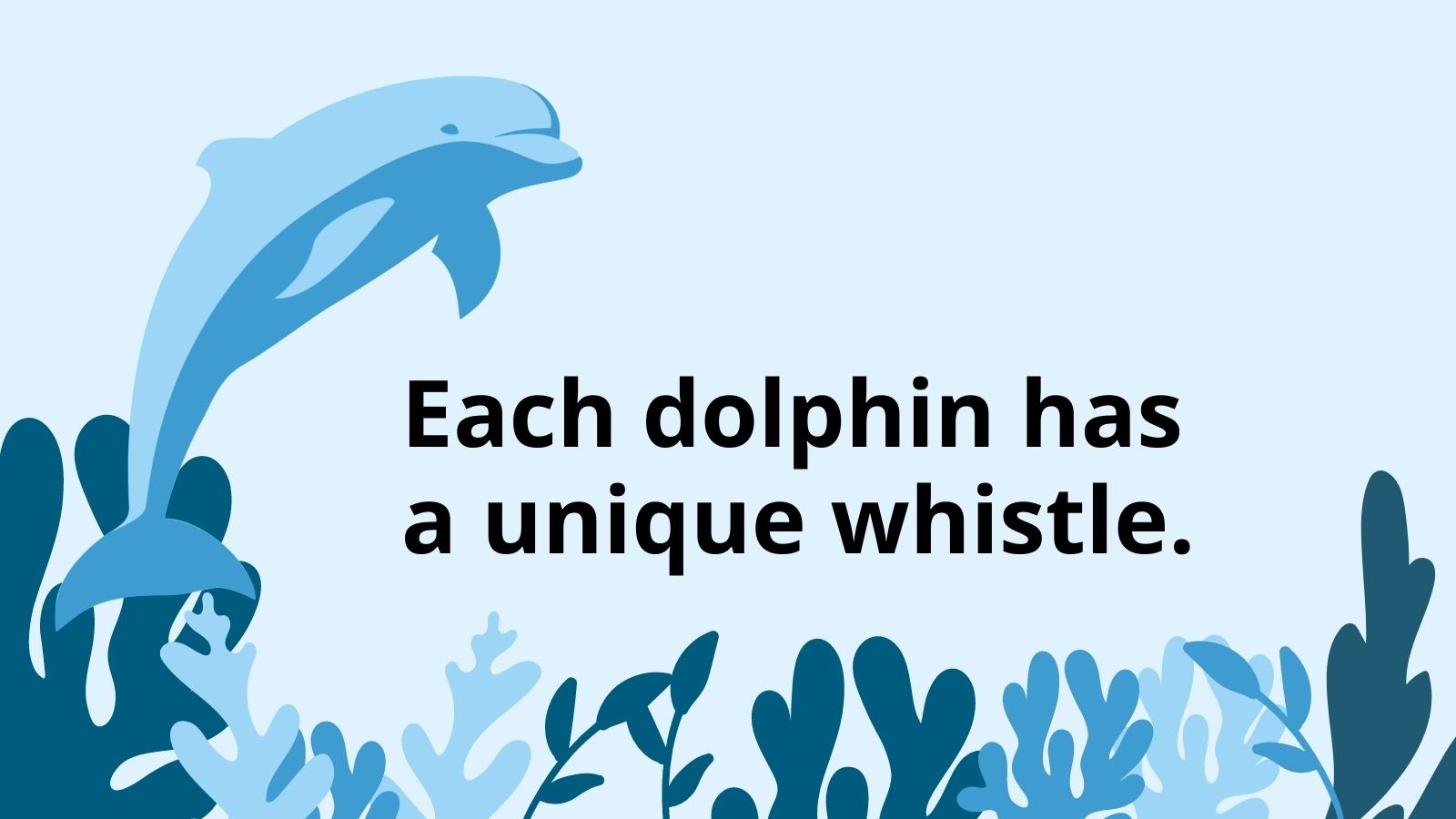
Dolphins are known for being playful, adorable, and very intelligent. In fact, many have called them the geniuses of the ocean. Maybe that’s why they’re so popular and beloved around the world! We might be familiar with their beautiful faces, but how much do we know about these graceful creatures? These fascinating dolphin facts for kids are perfect for lesson plans or trivia in the classroom.
1. Dolphins are mammals.
Even though they look like big fish, dolphins are mammals that belong to the whale family. They are marine mammals that can be found in tropical and temperate oceans (oceans with mild temperatures) around the world.
2. Porpoises and dolphins are different.
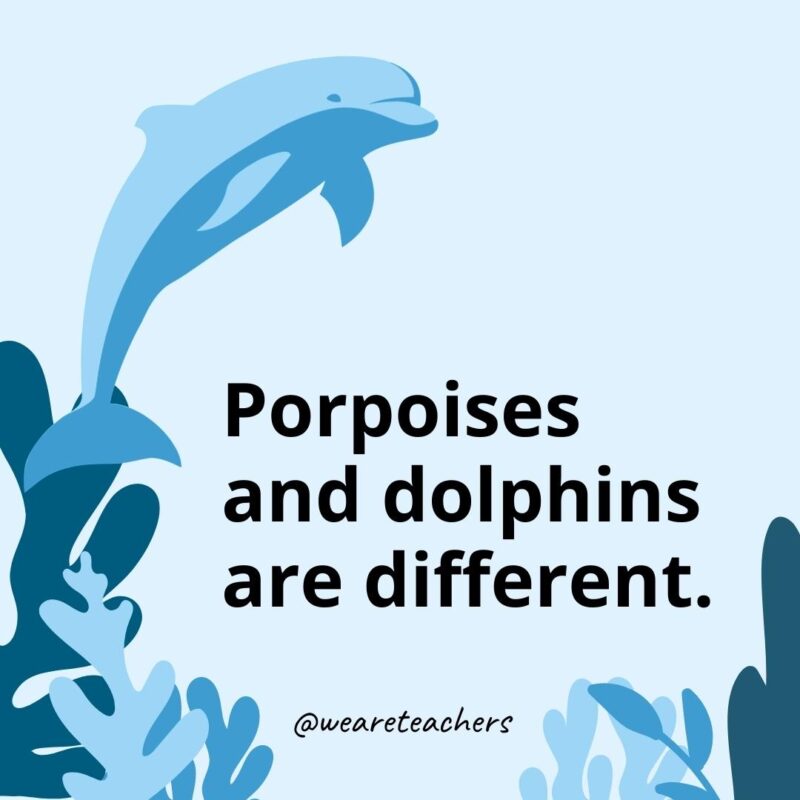
Even though they are closely related and look so much alike, dolphins and porpoises are different. Typically, dolphins are larger and have longer snouts, and dolphins generally have leaner bodies while porpoises’ are portly.
3. Dolphins are carnivores.
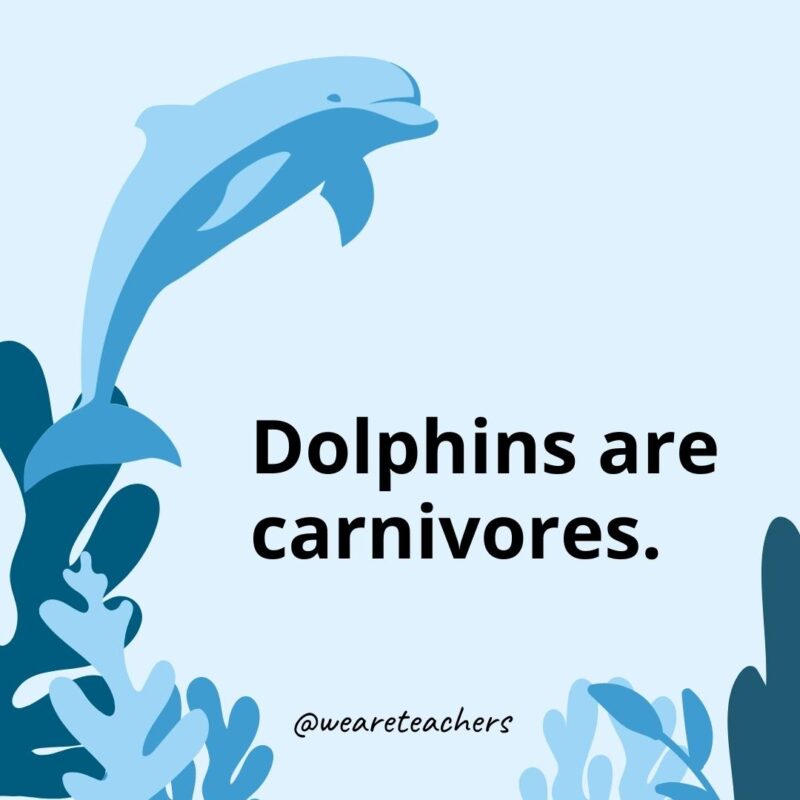
Dolphins eat mostly fish, but they also eat crustaceans such as squid and shrimp.
4. Bottlenose dolphins are one of the most familiar and abundant dolphins in the sea.
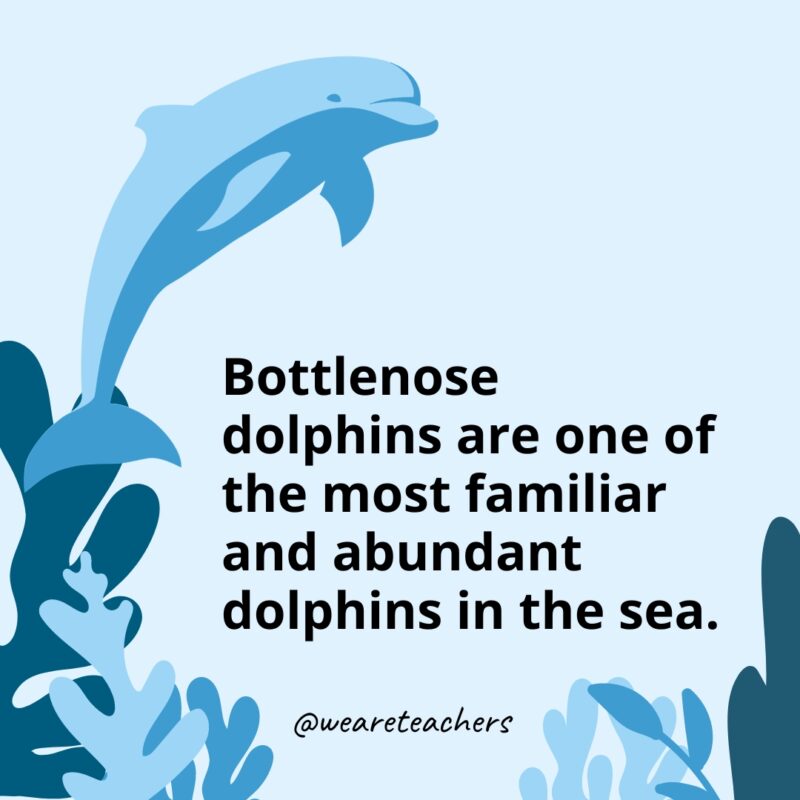
The scientific name for bottlenose dolphins is tursiops truncatus. Watch this video to learn more about bottlenose dolphins.
5. A group of dolphins is called a pod.
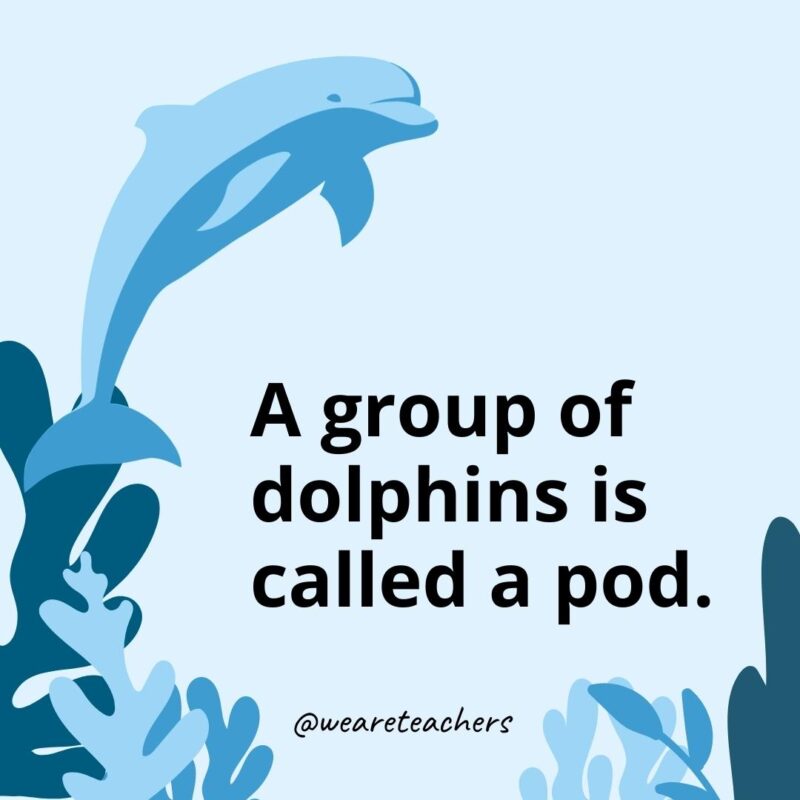
Bottlenose dolphins are social creatures that travel in groups, or pods, of around 10 to 15.
6. Bottlenose dolphins can live for 40 to 60 years.
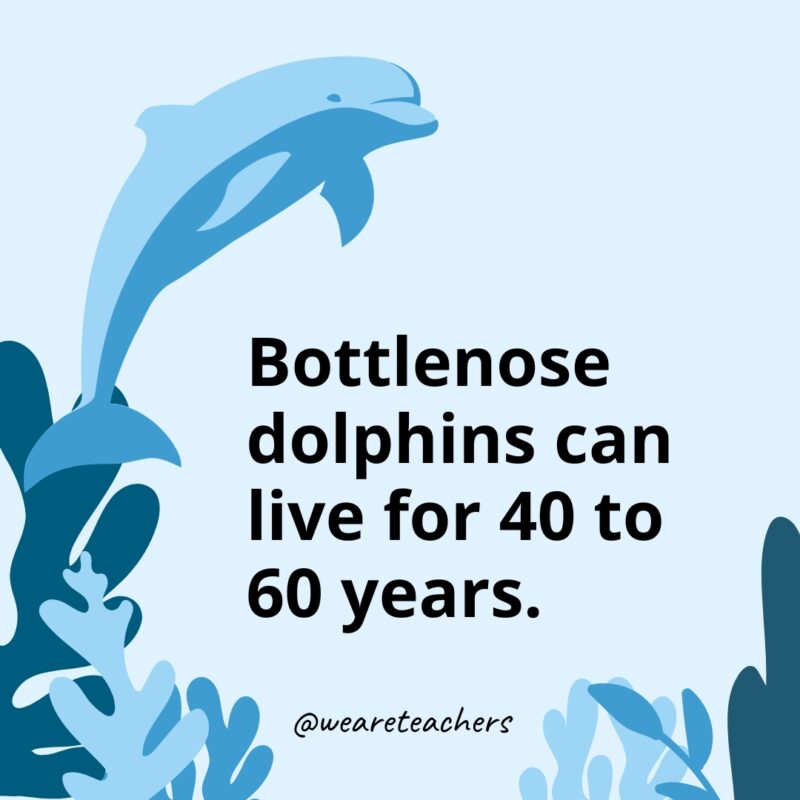
This is their average life span in the wild.
7. Each dolphin has a unique whistle.
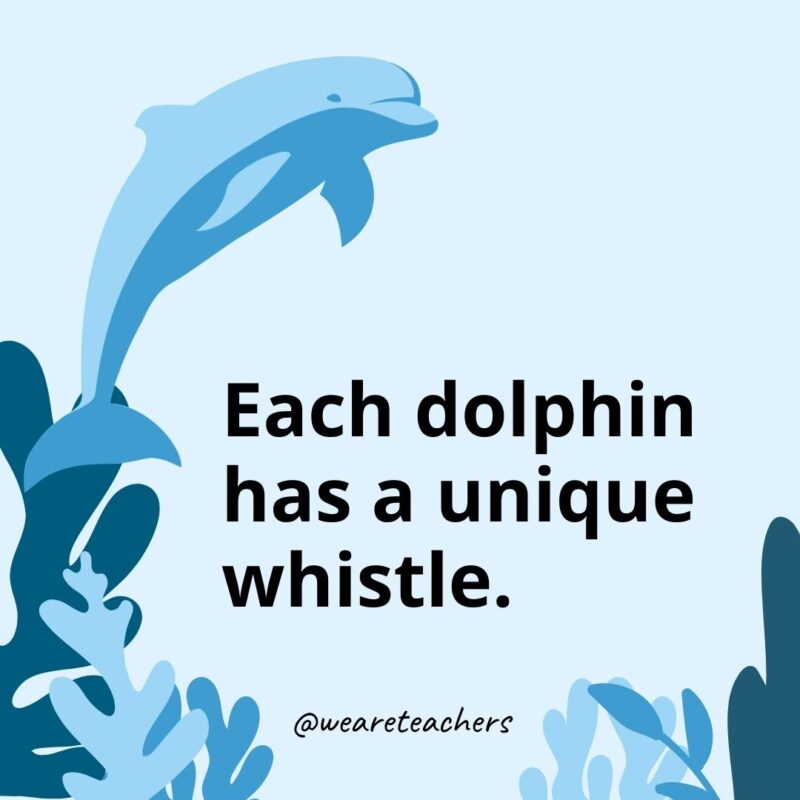
Much like humans have names, dolphins are identified by a special whistle that each creates soon after being born. Watch this video about how dolphins name themselves.
8. Dolphins are great communicators.
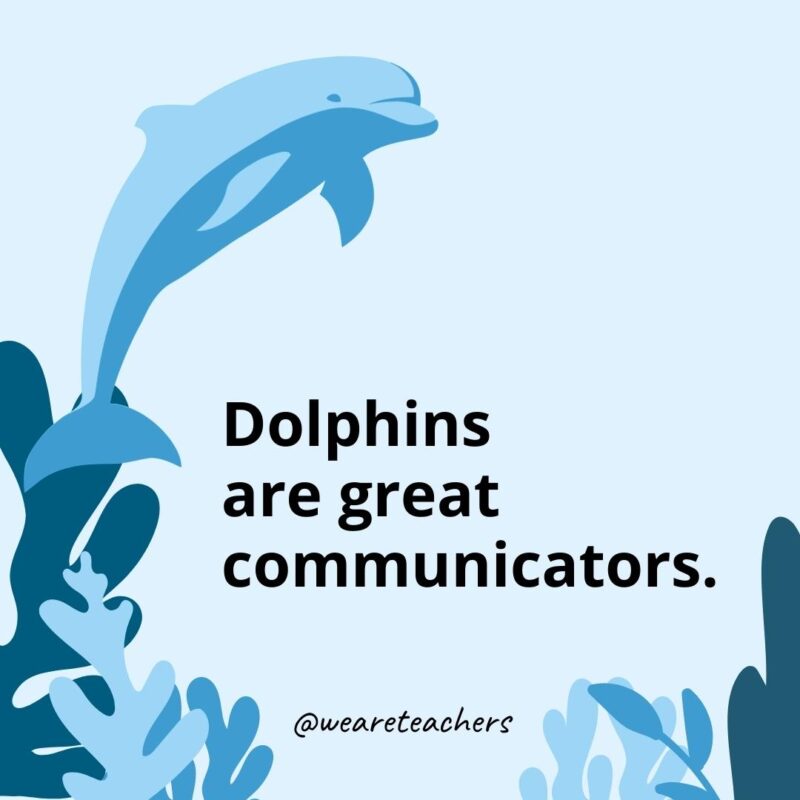
Dolphins squawk and whistle and also use body language to communicate, like slapping their tails on the water, blowing bubbles, snapping their jaws, and butting heads. They even leap as high as 20 feet in the air!
9. Dolphins rely on echolocation.
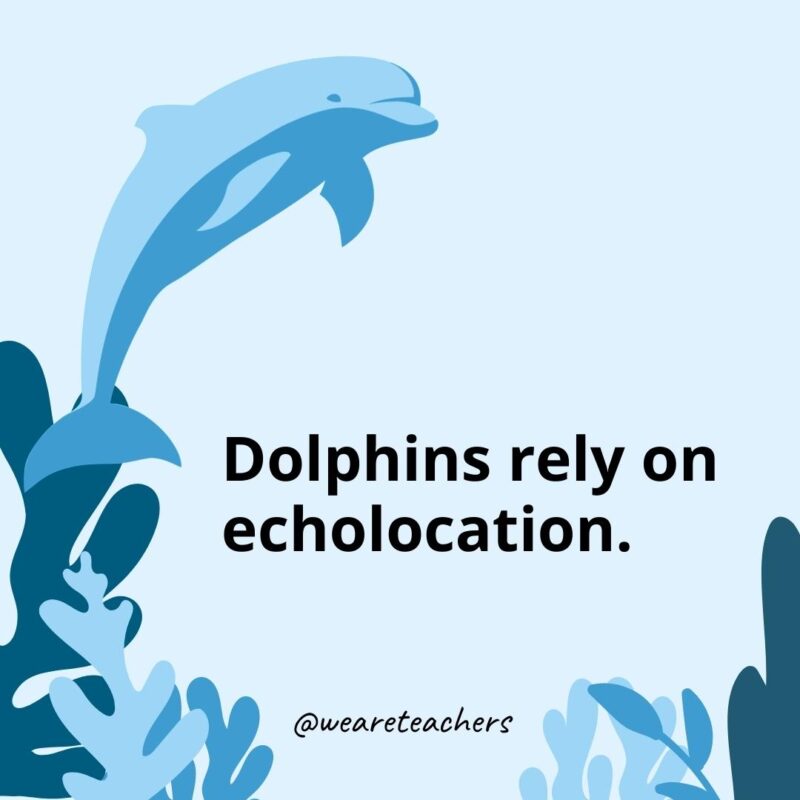
The high-frequency clicks dolphins produce bounce off objects in the water, and those sounds bounce back to dolphins as echoes. This sonar system tells dolphins the location, size, shape, speed, and distance of the object. Watch this video to learn more.
10. Bottlenose dolphins have great hearing.
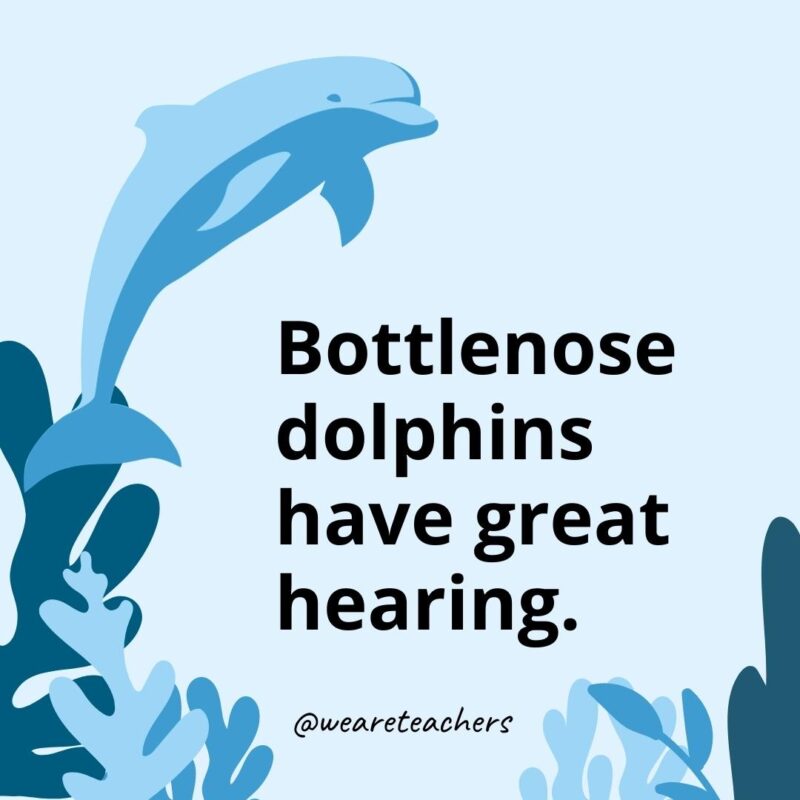
It’s believed that sounds travel to the dolphin’s inner ear through its lower jaw before being transmitted to the brain.
11. Dolphins shed their outermost layer of skin every two hours.
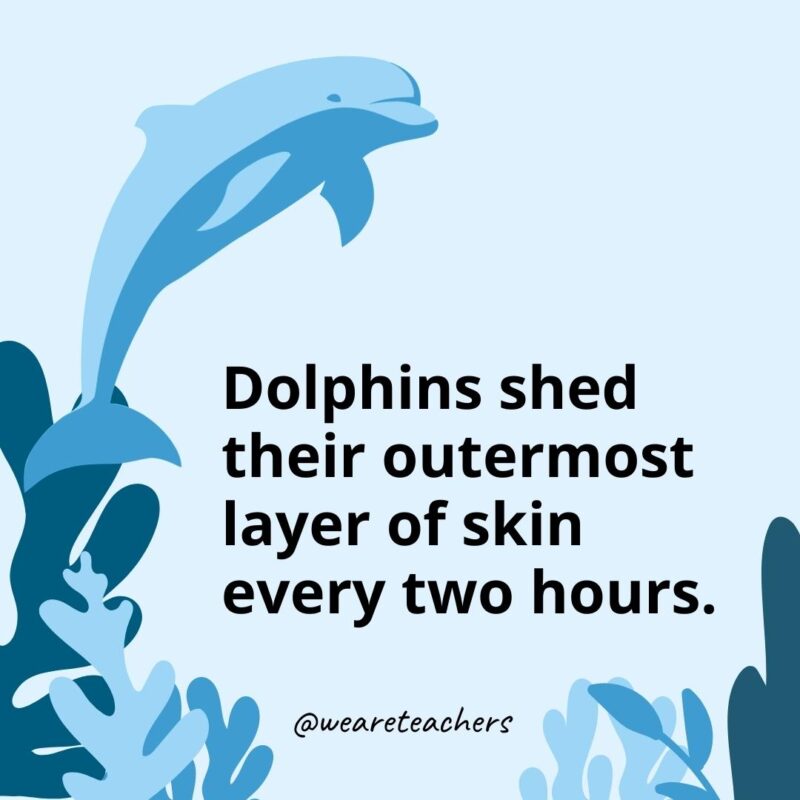
This sloughing rate, which is nine times faster than humans, helps improve swimming efficiency by keeping their bodies smooth.
12. Dolphins have lasting friendships.
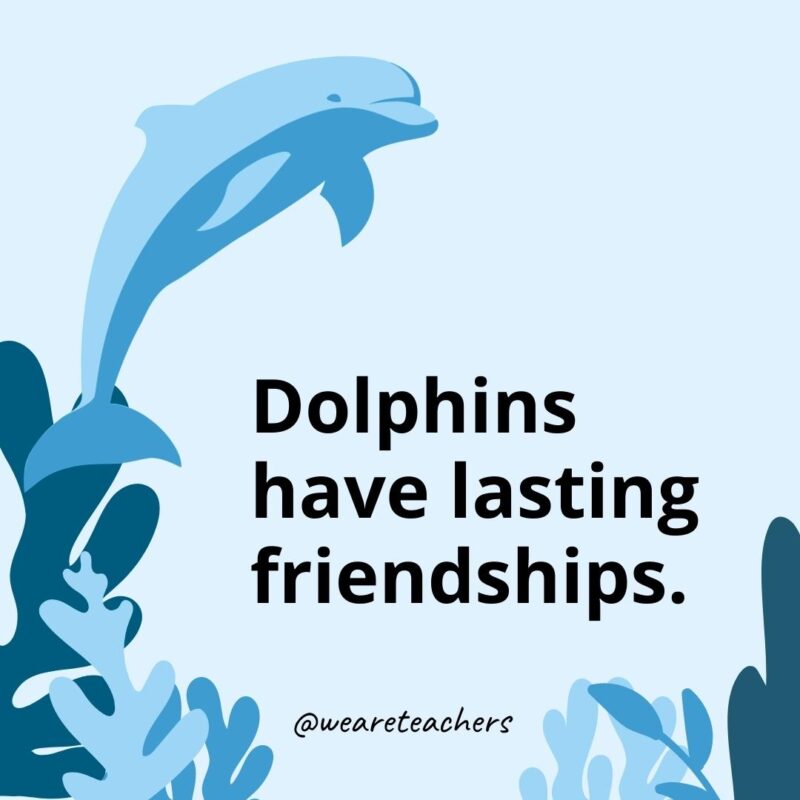
These very playful and social mammals spend decades protecting, mating, and hunting with their close friends. They also cooperate to raise young dolphin calves together. Check out this amazing video of a dolphin super-pod.
13. Dolphins can swim up to 22 miles per hour.
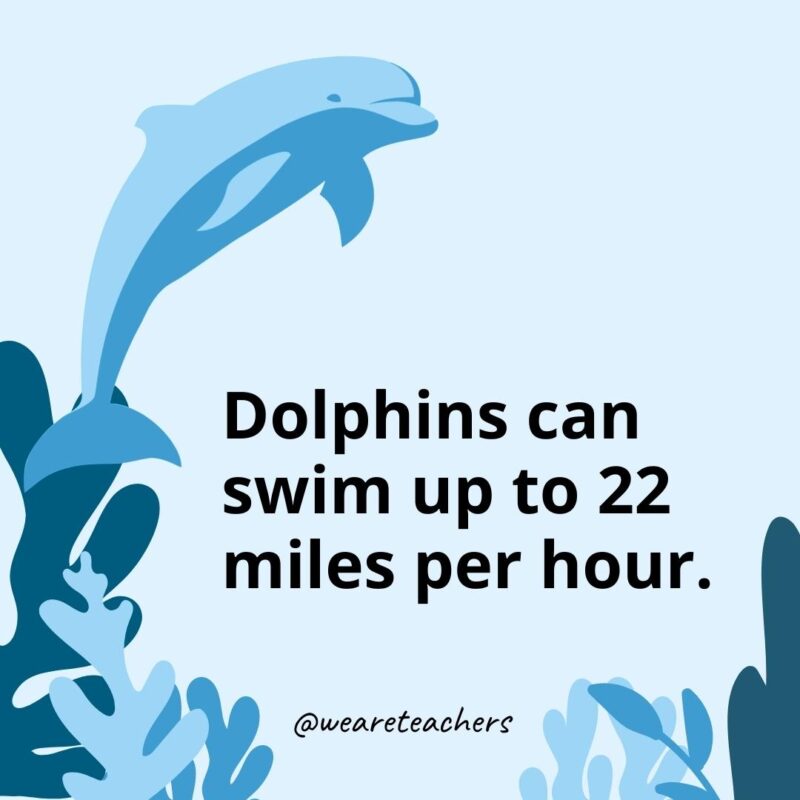
They easily glide through the water using their curved dorsal fin, pointed flippers, and powerful tail.
14. Dolphins love to have fun!
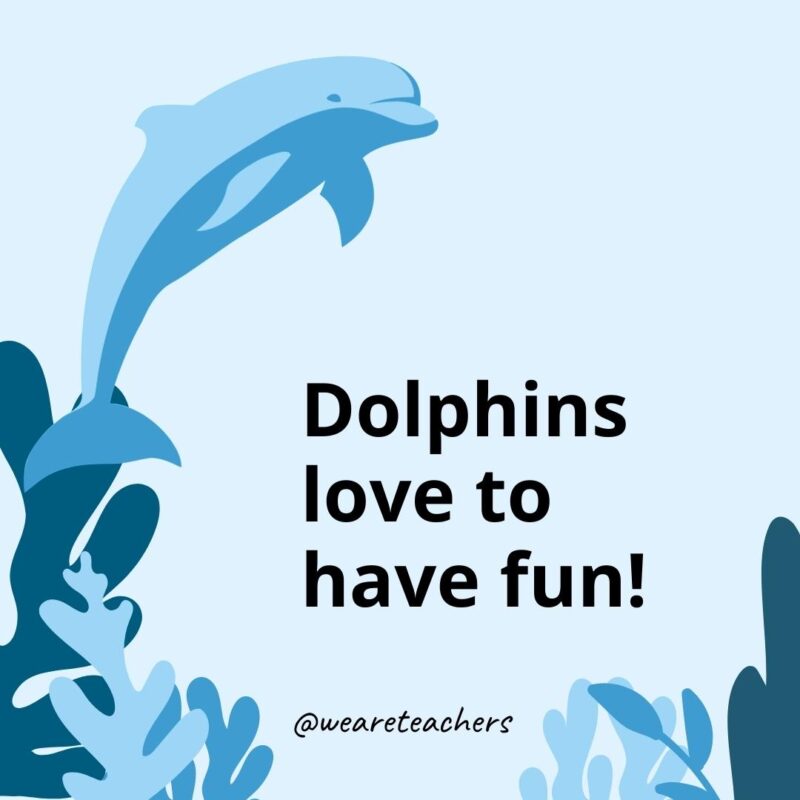
These sea mammals enjoy surfing in the wakes and waves of boats and swimming through self-made bubble rings. They even play catch with pufferfish!
15. Dolphins work together for food.
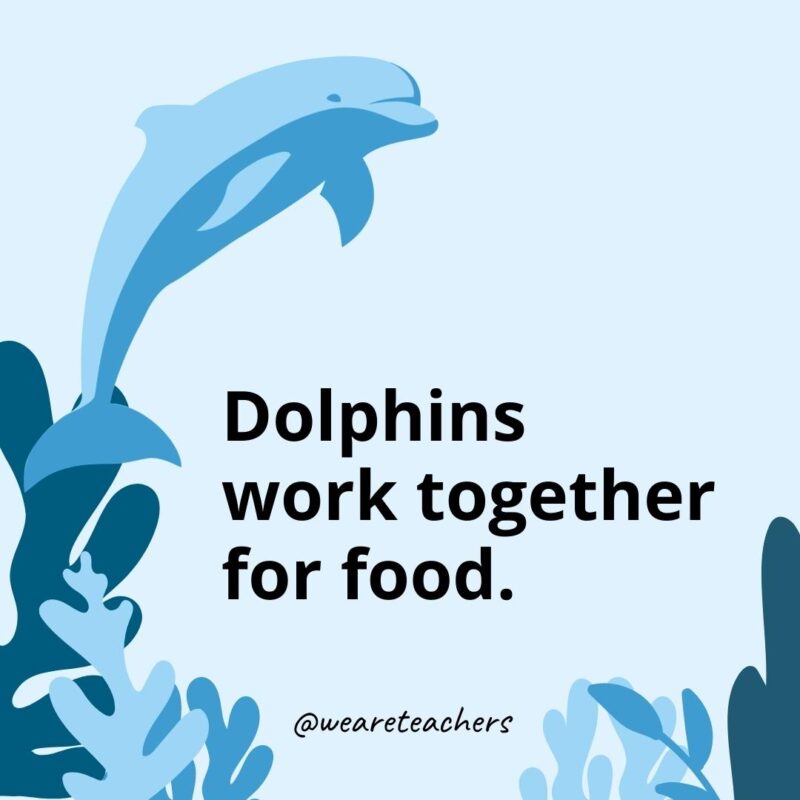
These sea mammals cooperate as a group to create a mud ring to trap fish. Some will even wait outside of the ring to eat the fish that try to escape.
16. Bottlenose dolphins live in warm water.
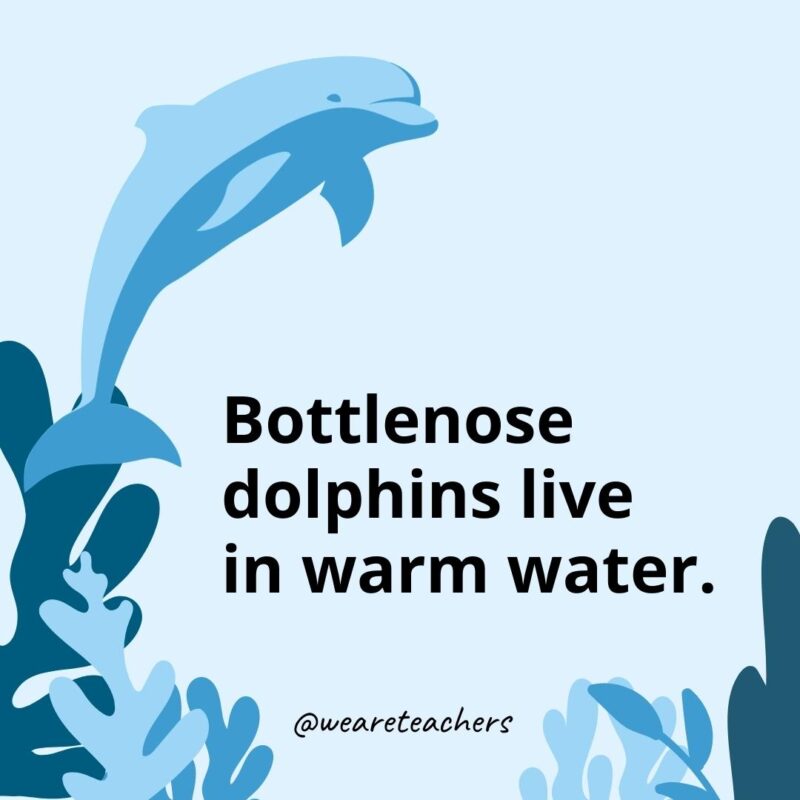
All around the world, dolphins can be found far out in the deep, dark water as well as the shallow water close to shore.
17. Bottlenose dolphins have a total of 72 to 104 teeth.
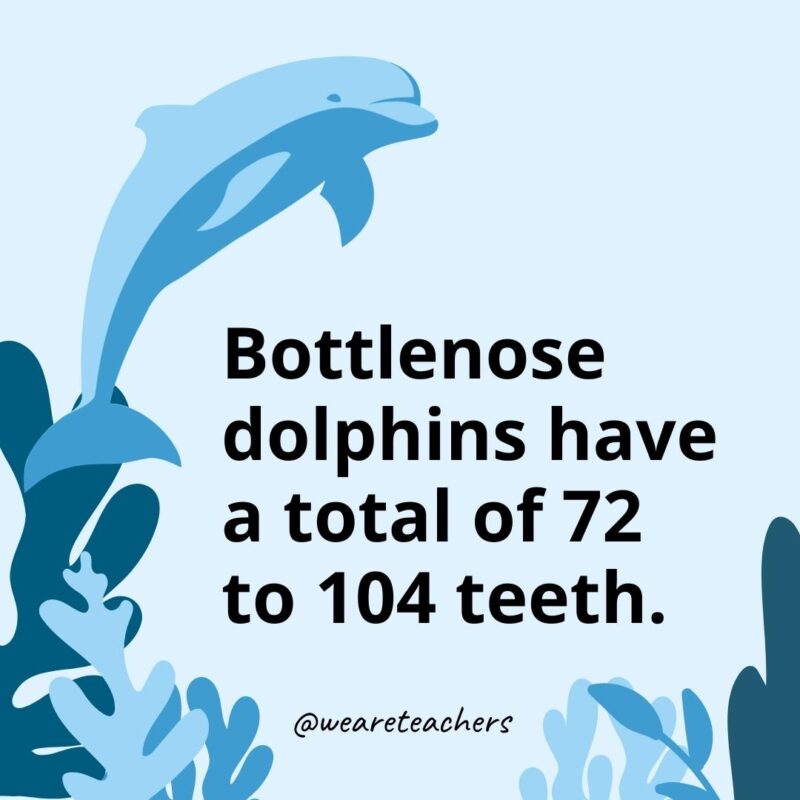
They have 18 to 26 teeth on each side of the upper and lower jaws.
18. Dolphins don’t chew their food.
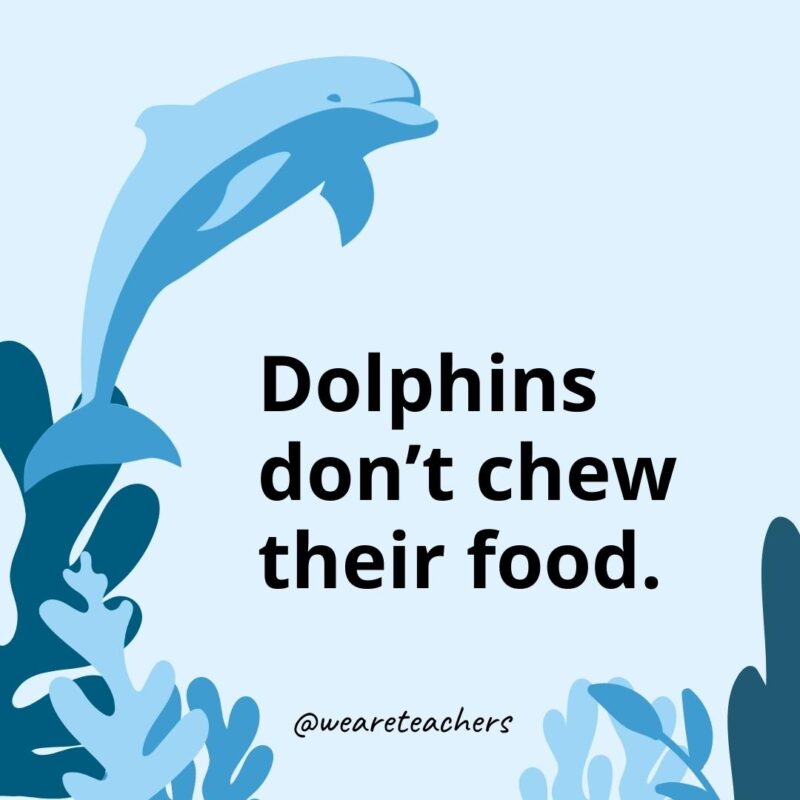
Dolphins may have a lot of teeth, but they don’t use them for chewing. Instead, their teeth are designed to grasp food so they can swallow it.
19. A dolphin’s skin is smooth and feels rubbery.
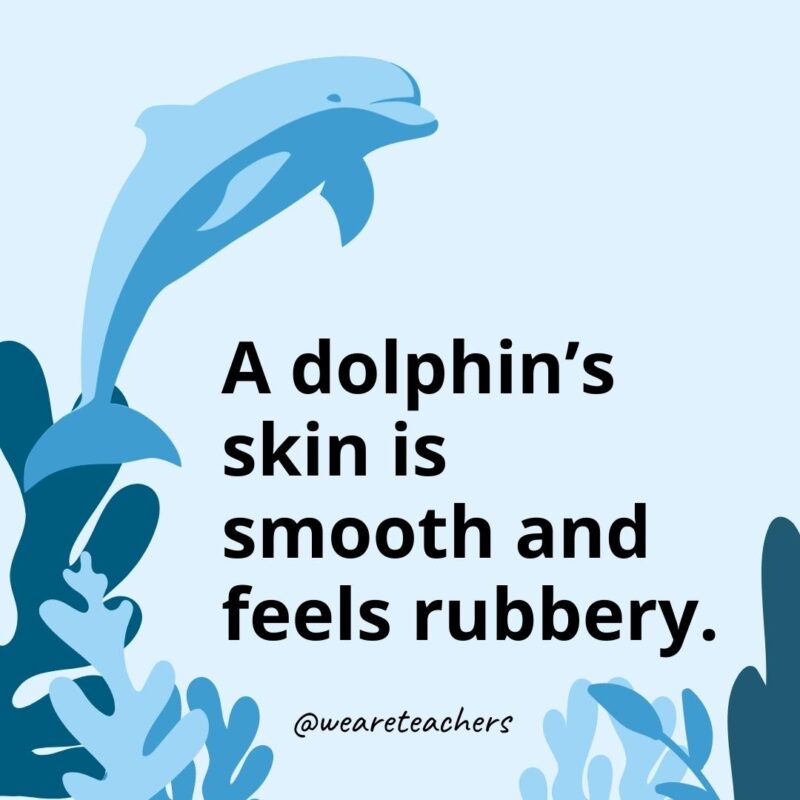
They don’t have hair or sweat glands, and their outer layer of skin (epidermis) is up to 20 times thicker than the epidermis of humans.
20. Dolphins are very smart.
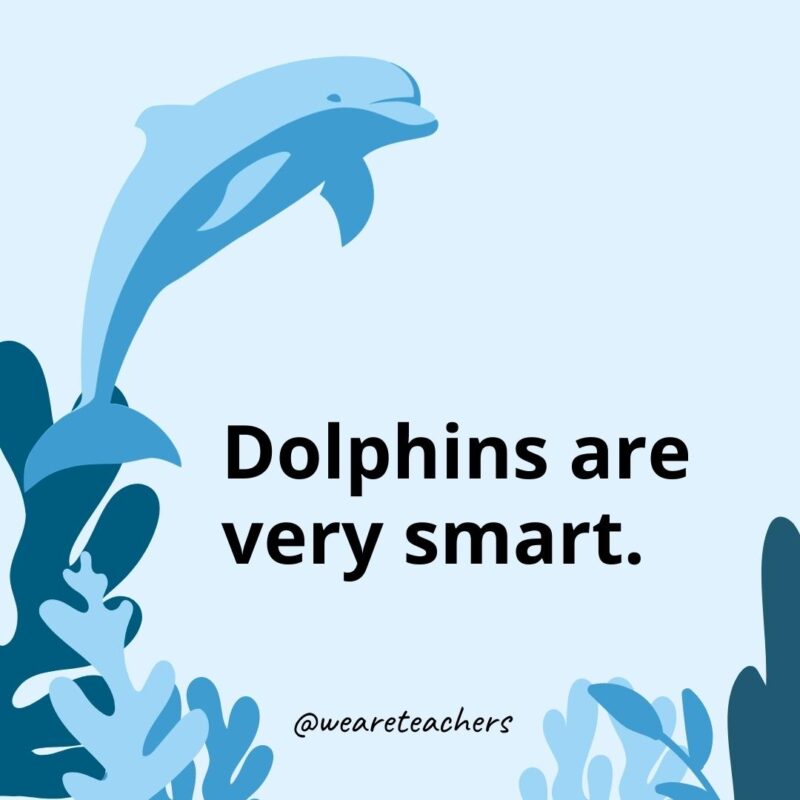
These brainiacs of the sea have large brains, are quick learners, and have demonstrated problem-solving, empathy, teaching skills, self-awareness, and innovation.
21. Dolphins are survivors.
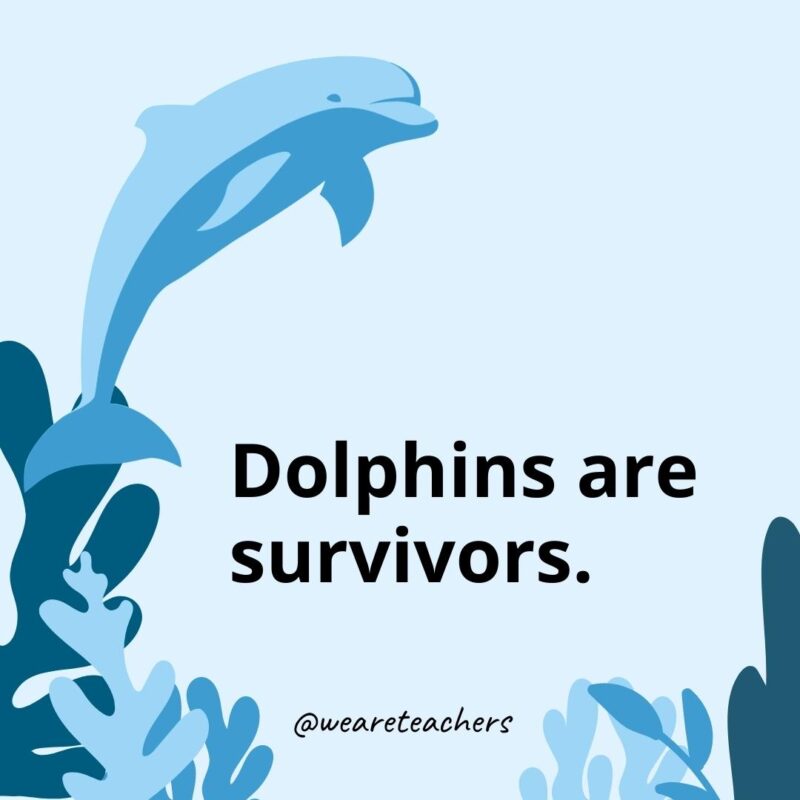
Their brains, bodies, intelligence, and even sensory systems have evolved over millions of years to adapt to various changes in their habitats. In fact, they used to be able to live on land!
22. Leaving trash on the beach puts dolphins at risk.
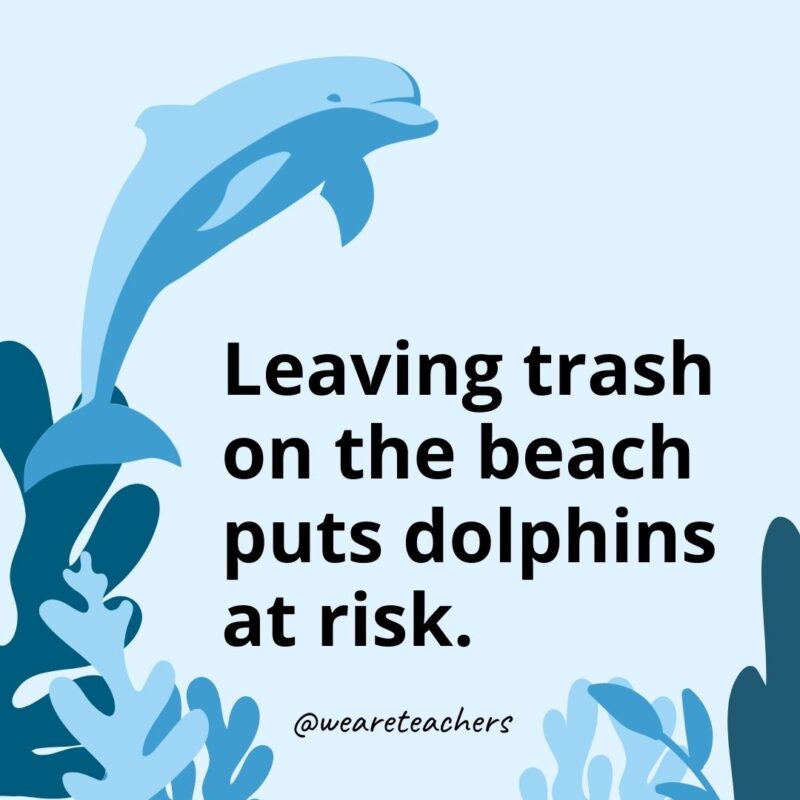
Dolphins sometimes get trapped in the garbage humans leave on the beach that winds up in the ocean. This has become a major problem. Watch this video about how we can keep plastics out of our oceans.
23. Dolphins make up to 1,000 clicking noises per second.
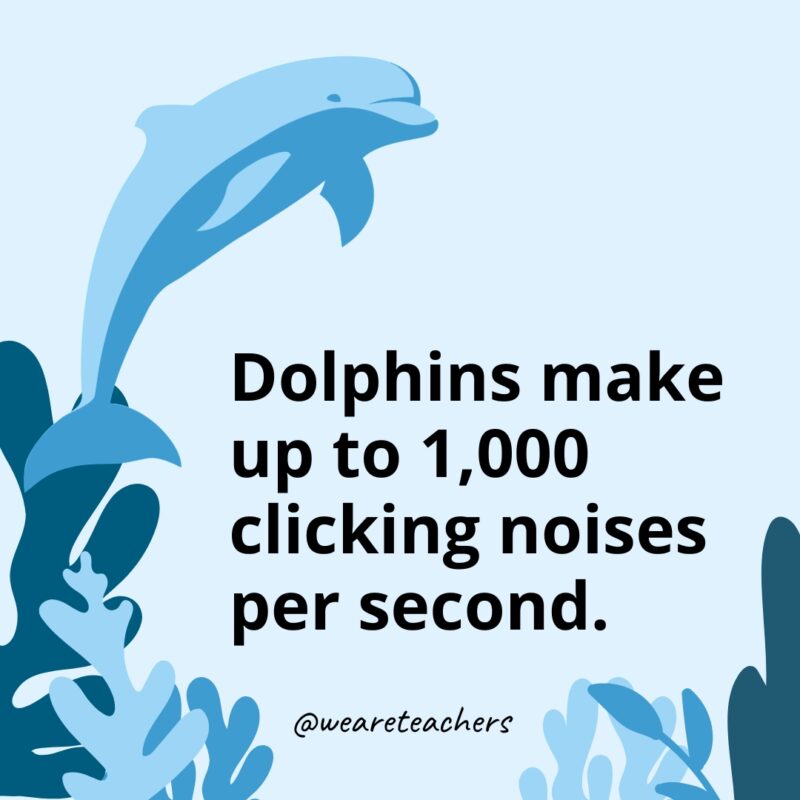
These sounds travel under the water until they reach an object, then bounce back to the dolphin, allowing them to understand the location and shape of the object hit.
24. Dolphins have three stomach chambers.
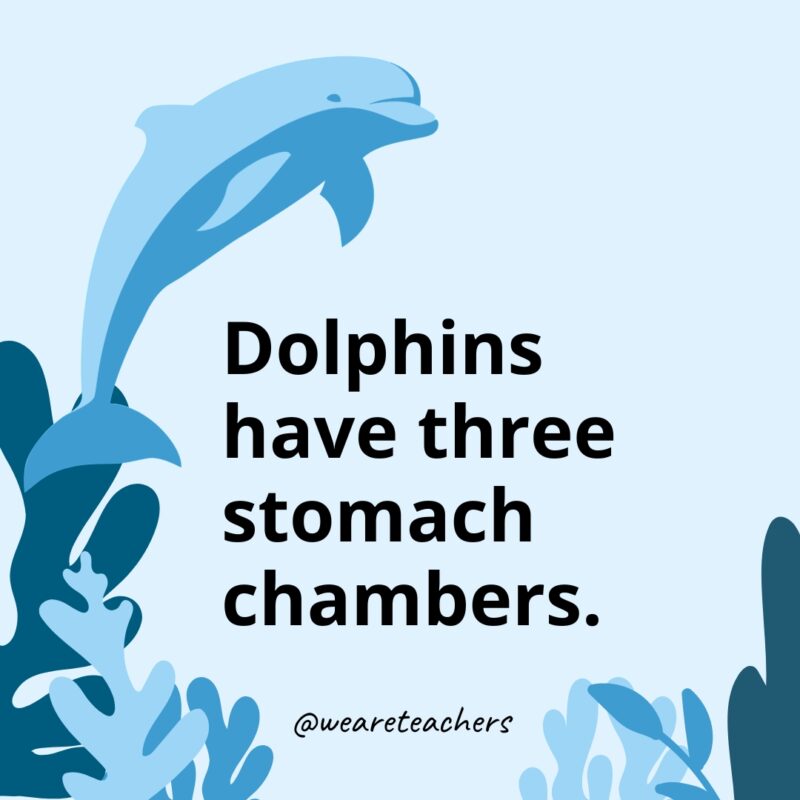
Because dolphins swallow their food whole, they need three stomachs to help digest their food.
25. Dolphins don’t have vocal chords.
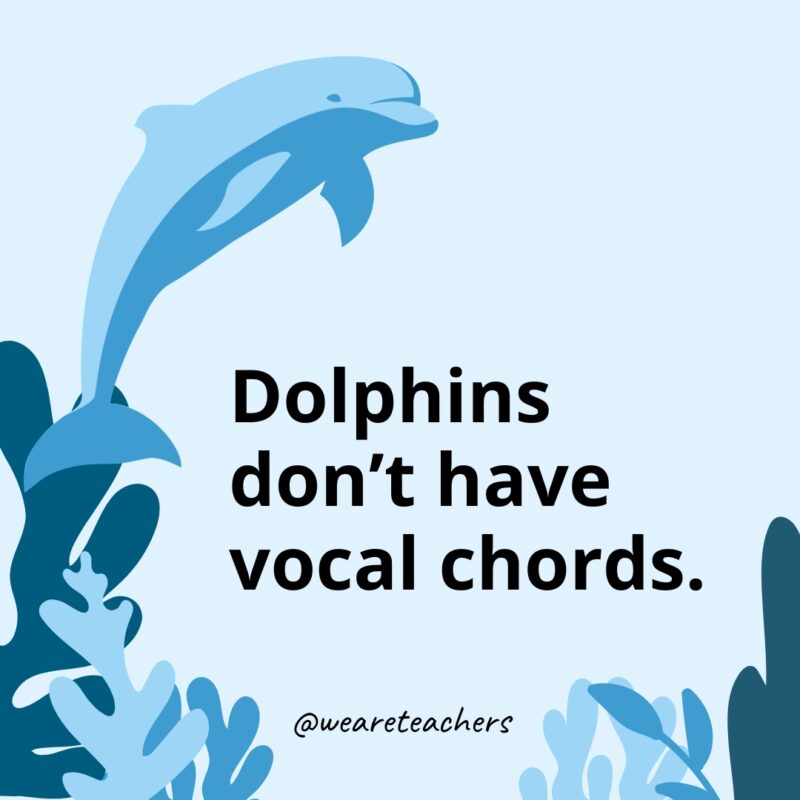
Instead, the noises that dolphins make actually come from their blowhole.
26. Dolphins are born with hair.
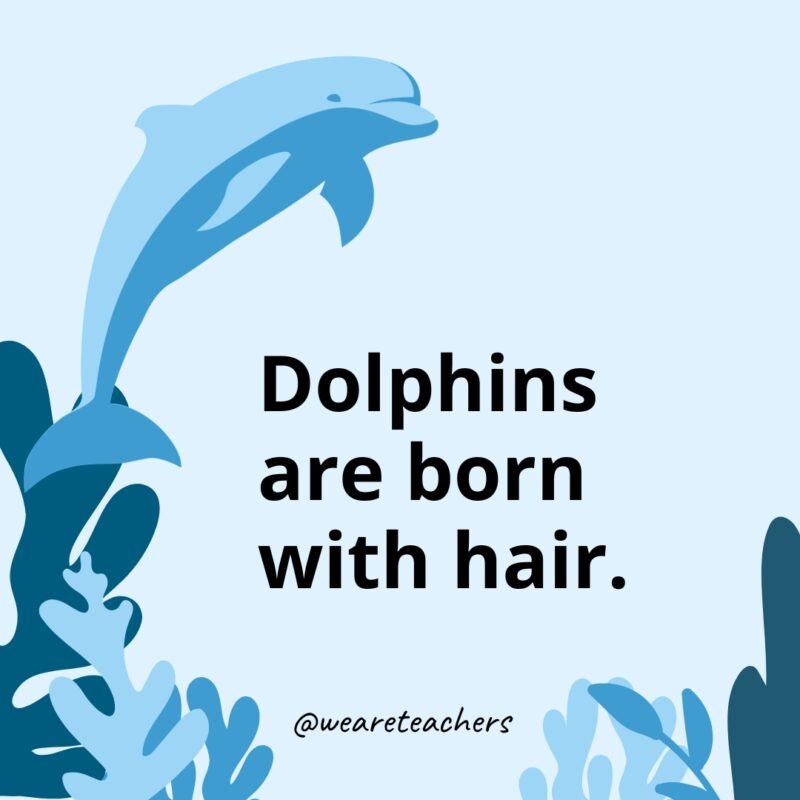
A baby dolphin, called a calf, is born with hair and whiskers that fall out soon after birth.
27. A dolphin can hold its breath for 5 to 7 minutes.
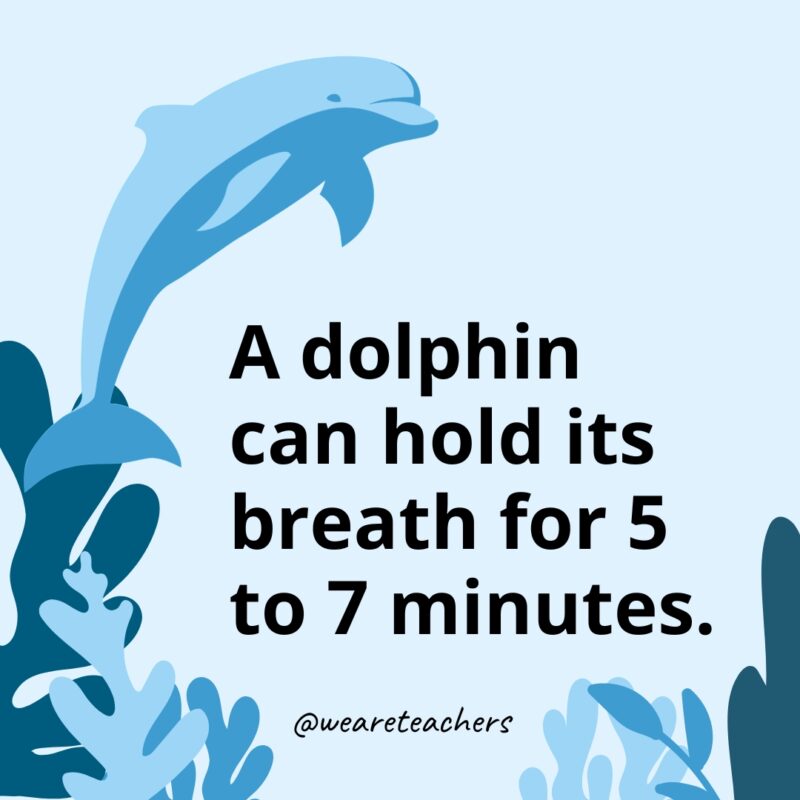
This aids the dolphin in finding prey and helping it survive.
28. There are dolphins in the Amazon River.
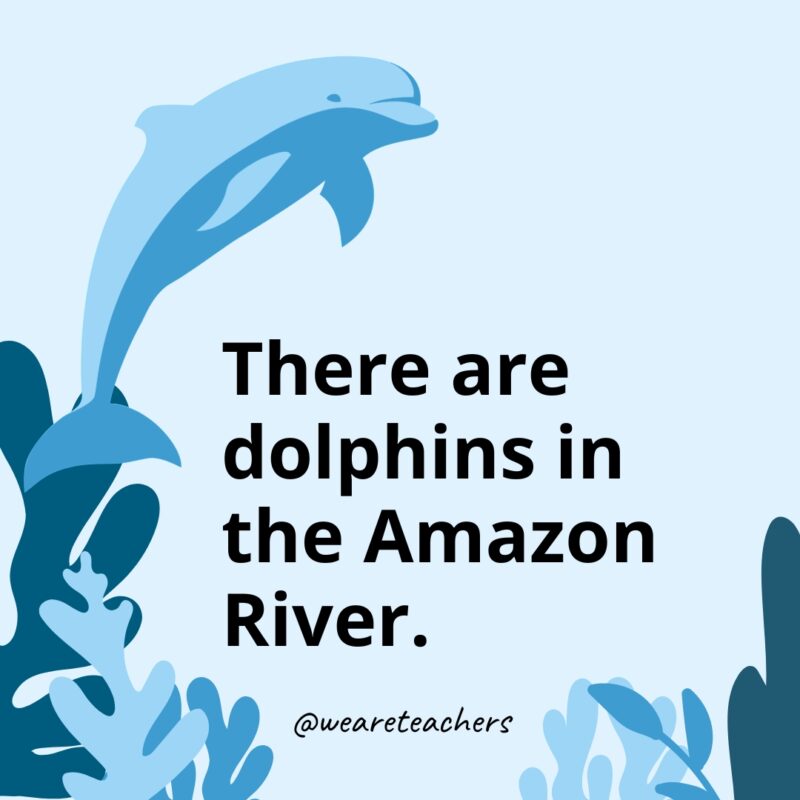
These dolphins are more agile than other species of dolphins due to their surroundings, and they have vertebrae in their necks to turn their heads a full 180 degrees. Check out this video of the Amazon River dolphins in action!
29. Dolphins use tools.
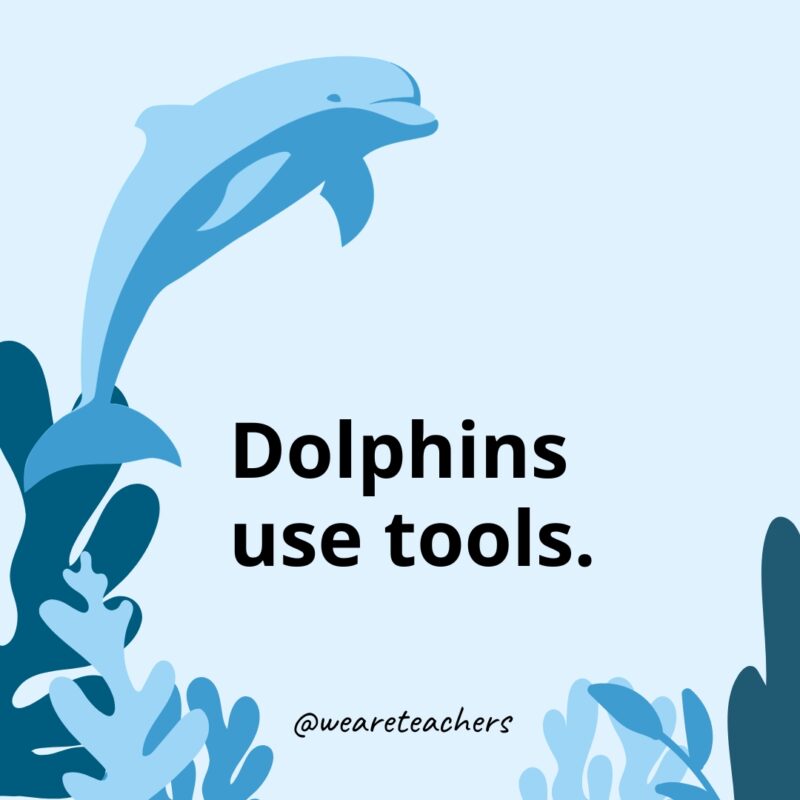
Dolphins have been observed using sponges to protect their snouts while they forage for food at the bottom of the sea.
30. Dolphins have a blowhole.
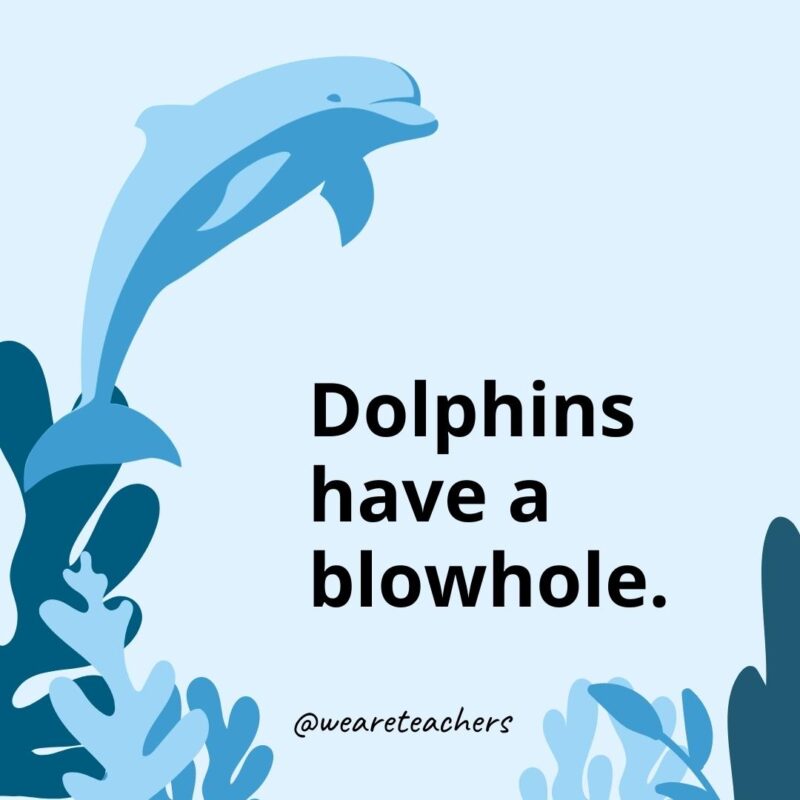
It’s located on the top of the dolphin’s head. When dolphins come up to the water’s surface for air, they open the blowhole to inhale and exhale and close it before dipping below the water’s surface. They can hold their breath for up to seven minutes!
31. Dolphins can recognize themselves in the mirror.
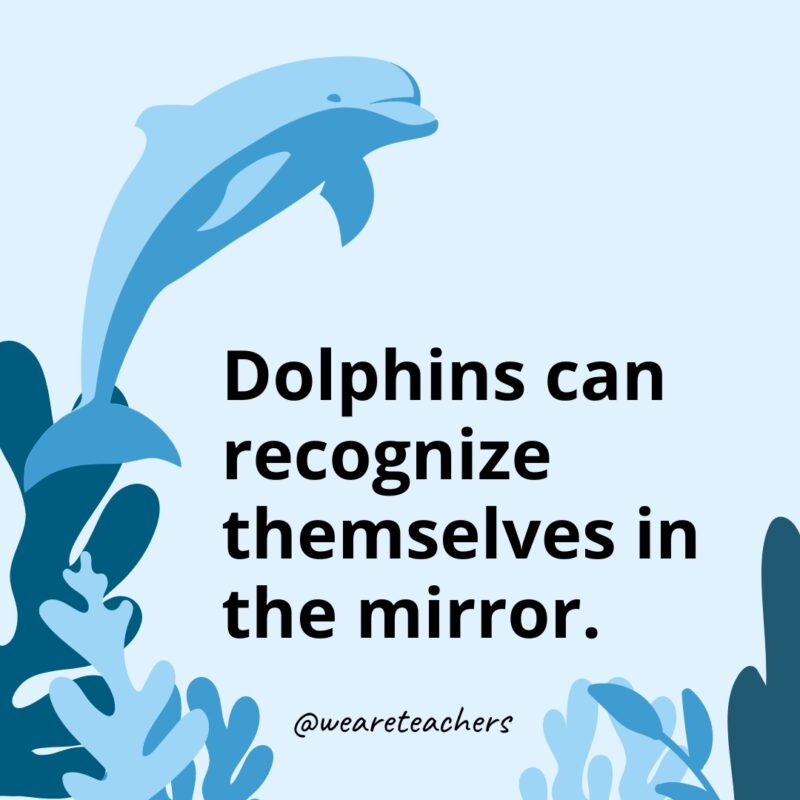
Dolphins have demonstrated self-awareness, a trait shared with only a few other species. They can recognize their own reflections in mirrors, indicating a high level of cognitive functioning.
32. Dolphins sleep with one eye open.
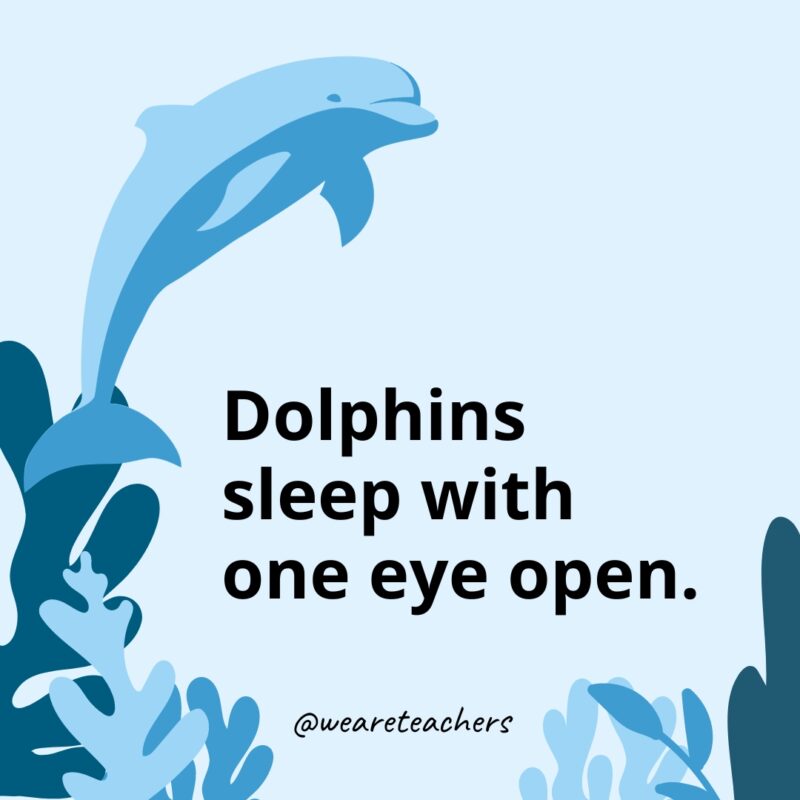
Dolphins are known to rest one hemisphere of their brain at a time while keeping the other half alert. This allows them to stay aware of their surroundings and breathe at the surface.
33. Dolphins have been known to rescue humans.
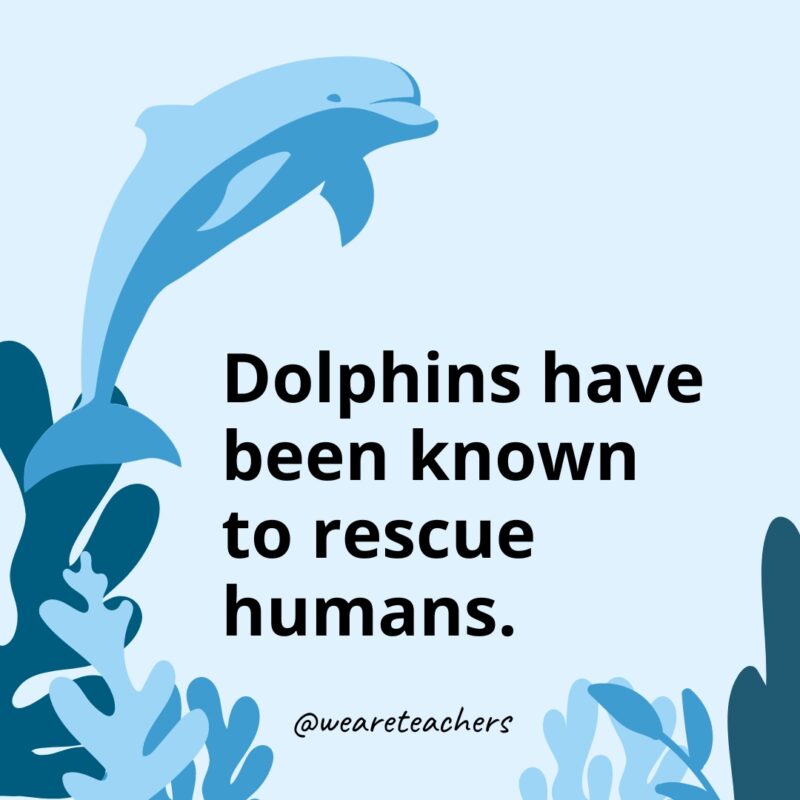
There are numerous documented instances of dolphins aiding humans in distress, such as rescuing them from drowning or protecting them from sharks.
34. Dolphins have a large neocortex in their brain.
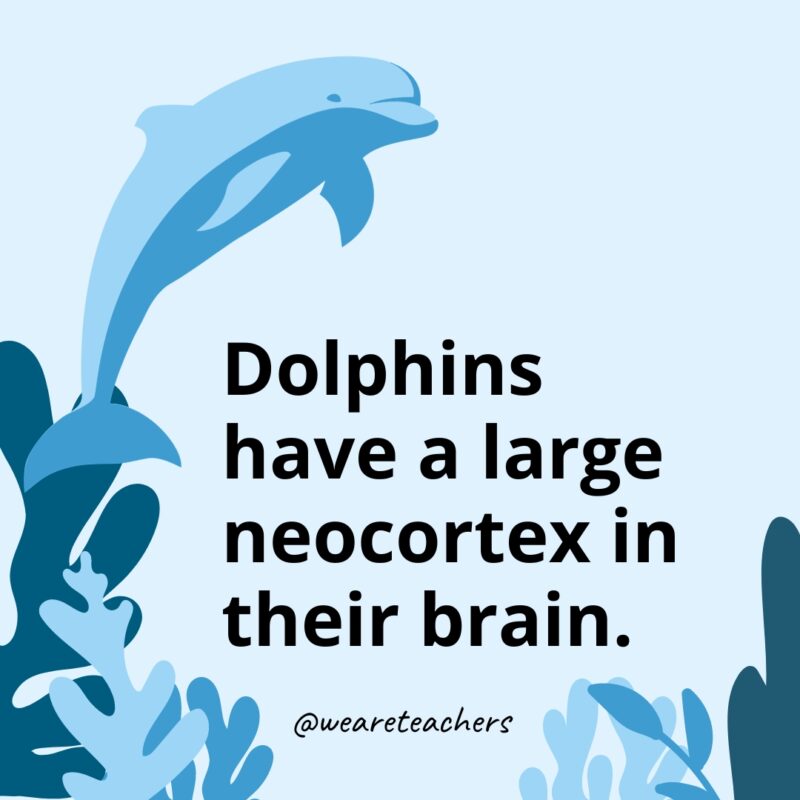
The neocortex of dolphins is highly developed, which is associated with higher-order brain functions such as sensory perception, cognition, and generation of motor commands.
35. Some dolphins can swim upside down.
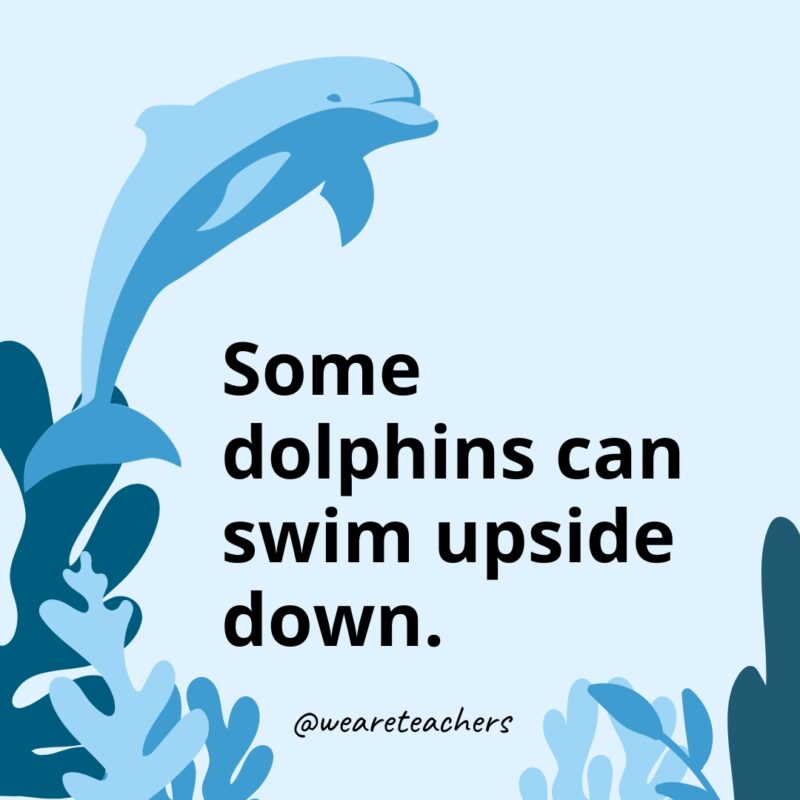
Commerson’s dolphins have the ability to swim upside down by using their flippers and tail flukes, showcasing their impressive agility and control in the water.
36. Dolphins have a flexible spine.

With seven cervical vertebrae, the flexible spine of a dolphin allows them to make quick, agile movements and helps them swim at high speeds and perform acrobatic leaps.
37. Dolphins have been observed grieving.
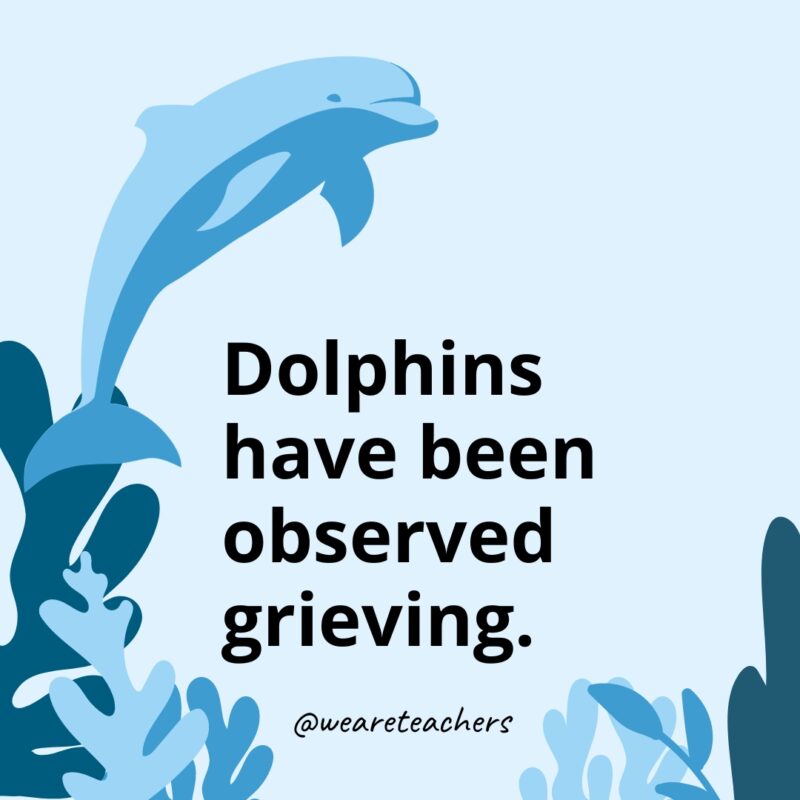
Dolphins have been seen displaying behaviors indicative of grief, such as carrying or staying with deceased pod members for extended periods.
38. Dolphins can stay awake for 15 days straight.

Research has shown that dolphins can remain continuously active and alert for up to 15 days by resting one hemisphere of their brain at a time.
39. Dolphins can recognize numerical values.
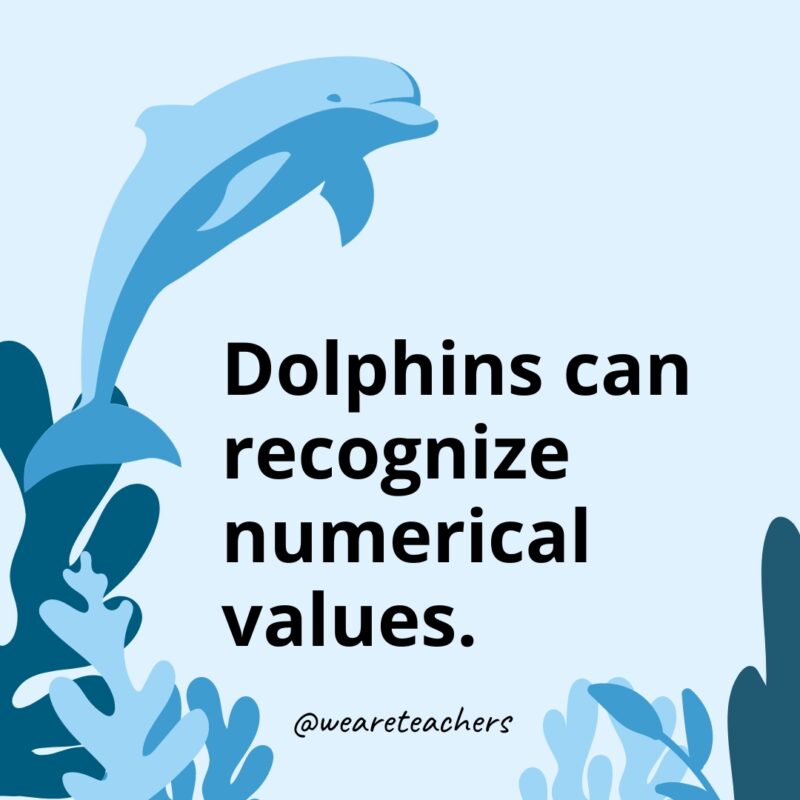
Studies have shown that dolphins can understand and differentiate between numerical values, indicating a level of numerical comprehension.
40. Dolphins have excellent vision both in and out of water.
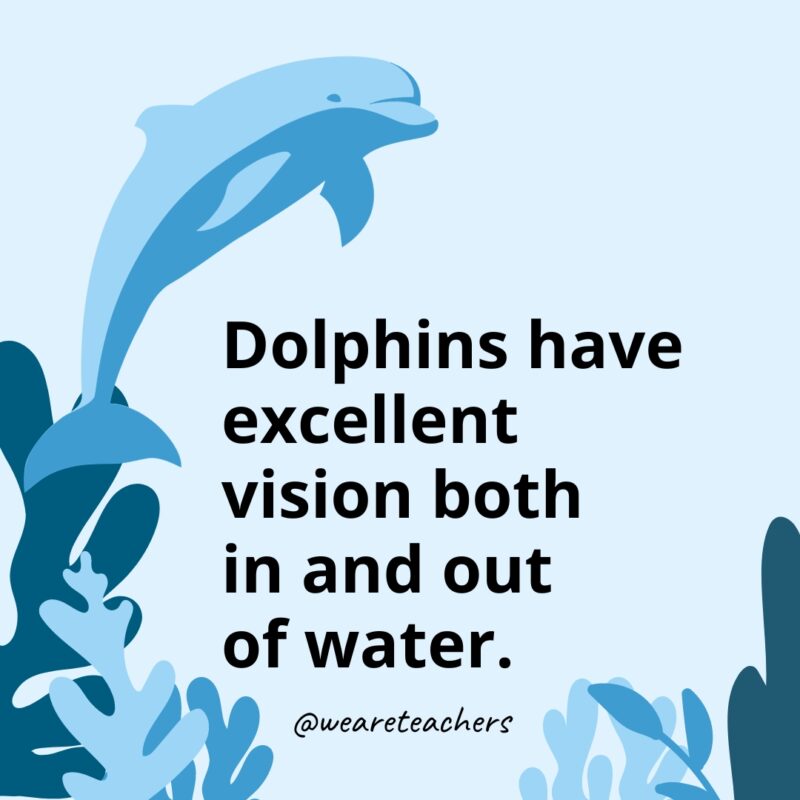
Bottlenose dolphins have adapted to see well in both aquatic and terrestrial environments. Their eyes have a special lens and cornea that correct for the refraction of light between air and water, allowing them to have clear vision in both mediums.






